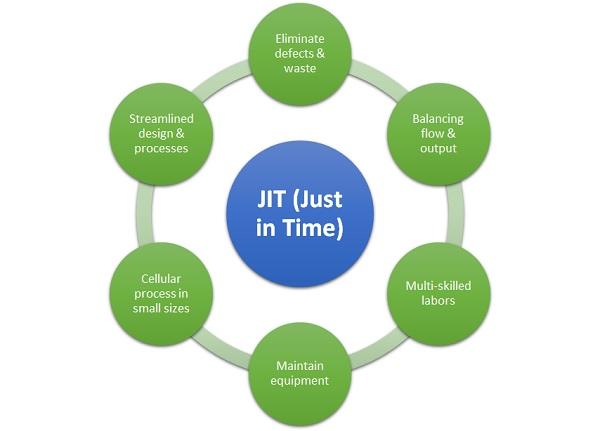In a world driven by instant gratification and efficiency, the concept of Just In Time (JIT) logistics has revolutionized the way goods are transported and shipped across the globe. This innovative approach focuses on delivering products exactly when they are needed, minimizing excess inventory and maximizing productivity. Join us as we delve into the world of JIT logistics and explore how it has reshaped the transportation and shipping industry.
Understanding the Basics of Just In Time Logistics
Just In Time (JIT) Logistics is a strategy used by businesses to minimize inventory and reduce storage costs by receiving goods only when they are needed in the production process. This approach helps companies streamline their operations and improve efficiency by eliminating waste and unnecessary holding of inventory. JIT Logistics involves a close coordination between suppliers, manufacturers, and distributors to ensure that products are delivered on time and in the right quantity.
One of the key principles of JIT Logistics is to eliminate any non-value-added activities that do not directly contribute to the production process. This includes reducing transportation times, improving communication between partners, and optimizing the supply chain to achieve maximum efficiency. By implementing JIT Logistics, companies can reduce lead times, lower operating costs, and improve customer satisfaction by delivering products quickly and efficiently.

Key Advantages and Challenges of Implementing JIT in Transport
Implementing Just In Time (JIT) in transport can bring numerous benefits to businesses looking to streamline their logistics operations. One key advantage is the reduction of excess inventory, which helps minimize storage costs and prevent overstocking. By delivering goods exactly when needed, companies can also improve efficiency and save on transportation expenses. Additionally, JIT in transport promotes better communication and collaboration between suppliers and manufacturers, leading to shorter lead times and improved overall supply chain management.
However, there are also challenges associated with implementing JIT in transport. One major concern is the risk of disruptions in the supply chain, such as delays in shipments or unexpected changes in demand. This can lead to increased transportation costs and potential loss of customer trust. Another challenge is the need for precise planning and coordination to ensure timely delivery of goods without causing bottlenecks or delays. Despite these challenges, many businesses find that the benefits of implementing JIT in transport outweigh the risks, ultimately leading to greater efficiency and cost savings in the long run.

Optimizing Shipping Processes for JIT Success
When it comes to optimizing shipping processes for Just In Time (JIT) success, efficiency is key. One way to achieve this is by utilizing advanced tracking technology to monitor shipments in real-time. This allows for greater visibility into the supply chain, reducing the risk of delays and ensuring that products arrive exactly when they are needed.
Another important factor to consider is the use of strategically located distribution centers to shorten delivery times. By strategically placing warehouses near major transportation hubs, companies can minimize transit times and streamline the shipping process. Additionally, implementing a flexible shipping schedule that aligns with production needs can help to further enhance JIT logistics. By constantly monitoring and adjusting shipping processes, companies can achieve greater efficiency and success in their Just In Time operations.

Strategies for Effective JIT Implementation in Logistics
Implementing Just In Time (JIT) in logistics requires a strategic approach to ensure efficiency and cost-effectiveness. One key strategy is to establish strong partnerships with reliable suppliers who can deliver materials on time and in the right quantities. By working closely with suppliers, companies can minimize inventory levels and reduce the risk of stockouts.
Another important strategy for JIT implementation is to streamline transportation processes. This involves using transportation management systems to optimize routes, minimize transit times, and reduce costs. By investing in technology and automation, companies can enhance visibility and control over their transportation networks, ultimately improving overall efficiency and customer satisfaction.
Final Thoughts
In conclusion, Just In Time (JIT) logistics has revolutionized the way goods are transported and shipped, streamlining the supply chain process and increasing efficiency. By delivering goods exactly when they are needed, businesses can lower costs, reduce waste, and improve overall customer satisfaction. Embracing JIT logistics can help companies stay competitive in today’s fast-paced market. So, whether you’re a manufacturer, distributor, or retailer, consider integrating JIT principles into your operations to stay ahead of the curve. Remember, timing is everything in the world of logistics.
